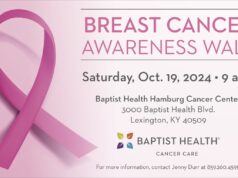Listen to your Heart
It could save your life
Heart disease is the leading cause of death in the United States. The term “heart disease” refers to several types of heart conditions. In the United States, the most common type of heart disease is coronary artery disease (CAD), which can lead to heart attack. You can greatly reduce your risk for heart disease through lifestyle changes and, in some cases, medicine.
February is American Heart Month, a time when all people—especially women—are encouraged to focus on their cardiovascular health. In 2024, we get 29 days to celebrate awareness — it’s a leap year!
 This Heart Month, the Division for Heart Disease and Stroke Prevention (DHDSP) is encouraging women to listen to their hearts and speak up for their health. Women in the United States are experiencing unacceptable and avoidable heart-related illness and death, and nearly half of U.S. women do not recognize that heart disease is the leading cause of death for women.
This Heart Month, the Division for Heart Disease and Stroke Prevention (DHDSP) is encouraging women to listen to their hearts and speak up for their health. Women in the United States are experiencing unacceptable and avoidable heart-related illness and death, and nearly half of U.S. women do not recognize that heart disease is the leading cause of death for women.
Help the women in your life listen to their hearts and raise their voices. When we encourage women to protect their own hearts, they can help others in their communities protect theirs.
—info provided by Center for Disease Control and Prevention
Heart Attack Symptoms
If you notice the symptoms of a heart attack in yourself or someone else, call 9-1-1 immediately. The sooner you get to an emergency room, the sooner you can get treatment to reduce the amount of damage to the heart muscle. At the hospital, health care professionals can run tests to find out if a heart attack is happening and decide the best treatment.
The major symptoms of a heart attack are
- Chest pain or discomfort. Most heart attacks involve discomfort in the center or left side of the chest that lasts for more than a few minutes or that goes away and comes back. The discomfort can feel like uncomfortable pressure, squeezing, fullness, or pain.
- Feeling weak, light-headed, or faint. You may also break out into a cold sweat.
- Pain or discomfort in the jaw, neck, or back.
- Pain or discomfort in one or both arms or shoulders.
- Shortness of breath. This often comes along with chest discomfort, but shortness of breath also can happen before chest discomfort.
Other symptoms of a heart attack could include unusual or unexplained tiredness and nausea or vomiting. Women are more likely to have these other symptoms.
Know the Risks
High blood pressure, high blood cholesterol, and smoking are key risk factors for heart disease. About half of people in the United States (47%) have at least one of these three risk factors. Several other medical conditions and lifestyle choices can also put people at a higher risk for heart disease, including
- Diabetes
- Obesity
- Unhealthy Diet
- Physical inactivity
- Excessive alcohol use
 100 Days
100 Days
The American Heart Association is celebrating its 100th Anniversary in 2024. Go to Heart.org to join 100 Ways in 100 Days. Celebrate 100 years of saving and improving lives at the American Heart Association by taking the next 100 days to focus on your health.
Every week, you’ll receive a new “Tips” email in your inbox. With just one click, you’ll be directed to a landing page with a tip for each day.
This article appears on pages 8-9 of the February 2024 issue of HJ. To subscribe to digital delivery each month, click here.












